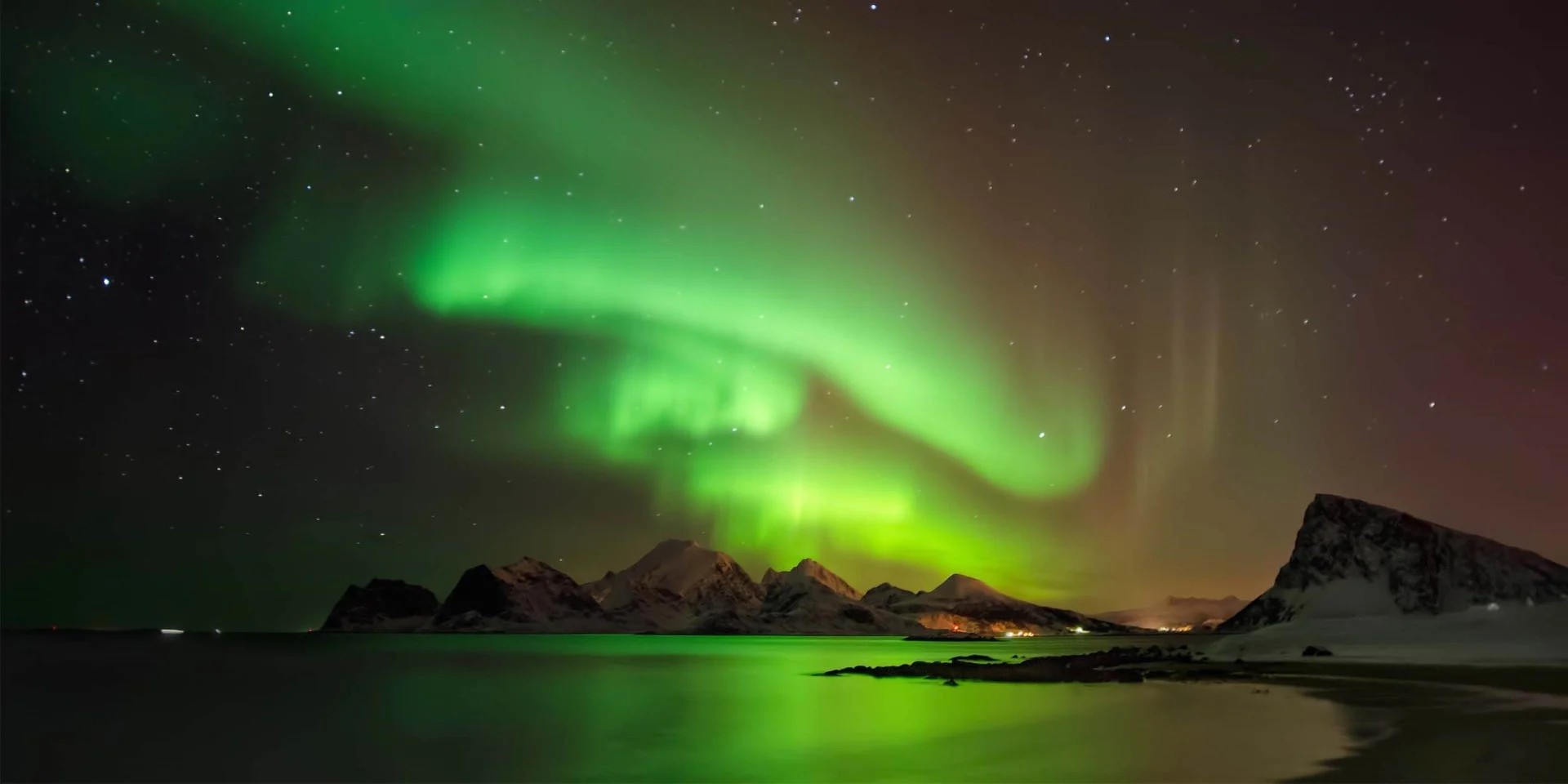What causes the Northern Lights?
The lights in the sky have occurred since the dawn of our planet. Dinosaurs walked under them, just as we do today. They are a constant of our world – always there, even when it’s too bright for us to see them. But what are they and how are they created?
3 mins read
For centuries, people have been sharing stories of the Northern Lights. Without scientific understanding, our ancestors were forced to fill in the gaps with fantastic stories of gods and monsters. These stories taught people to respect, fear, or worship the lights in the sky. But as our understanding of the solar system and our place within it grew, these stories dissolved into legends and myths. Today we know why the Northern (and Southern) Lights occur, but that doesn’t mean there isn’t still more to learn.
What lights up the sky?
The light show we see from the ground is caused by electrically charged particles from space entering the Earth’s upper atmosphere at a very high speed.
These particles originate from our star - the sun. The sun is constantly pushing out a stream of electrically charged particles called the solar wind, and this travels out from the sun at between 300 and 500 km per second in all directions.
As the Earth travels around the sun, a small fraction of particles from the solar wind are intercepted by the planet. Around 98% of these particles are deflected by the Earth’s magnetic field, and continue their journey into deep space. A small percentage of particles leak through the Earth’s magnetic field and are funnelled downwards towards the Earth’s magnetic North and South poles.
When these charged particles hit the atoms and molecules high up in our atmosphere, they become excited. This creates two glowing rings of auroral emission around the North and South magnetic poles, known as auroral ovals.
As they decay back to their original state, they emit distinctive colours of light. It’s this light we see when we look at the Northern Lights.
Standing under the ethereal glow of the Northern Lights, it’s easy to forget yourself. The realisation of the enormity of the universe washes over you, and you feel small (in a good way) and full of wonder.
Why can we see different colours?
The Earth’s atmosphere is made up of different atoms, like oxygen and nitrogen, and it’s these atoms that cause the colours we can see in the Northern Lights. These atoms become excited at different levels in the atmosphere.
The most common colour seen in the Northern Lights is green. When the solar wind hits millions of oxygen atoms in the Earth’s atmosphere at the same time, it excites the oxygen atoms for a time and then they decay back to their original state, when they emit the green hue we can see from the ground.
The red light we sometimes see is also caused by oxygen atoms. These particles are higher up in the atmosphere and are subject to a lower energy red light emission. The red colour is always there, but our eyes are five times less sensitive to red light than green, so we can’t always see it.
A large part of the Earth’s atmosphere is made up of nitrogen. The particles from the solar wind must hit nitrogen atoms a lot harder in order to excite them. Once the nitrogen atoms begin to decay, they emit a purple coloured light. This is quite a rare colour to see, and usually only happens during a particularly active display.
For the best chance of seeing the lights, you need to be under or close to one of the auroral ovals. As we sail towards the Arctic Circle, your chance of seeing the Northern Lights improves, but there are a lot of factors to consider when hunting the lights. Read our Northern Lights FAQ and learn how you can increase your chances of catching a glimpse of this awe-inspiring light show in the sky.
